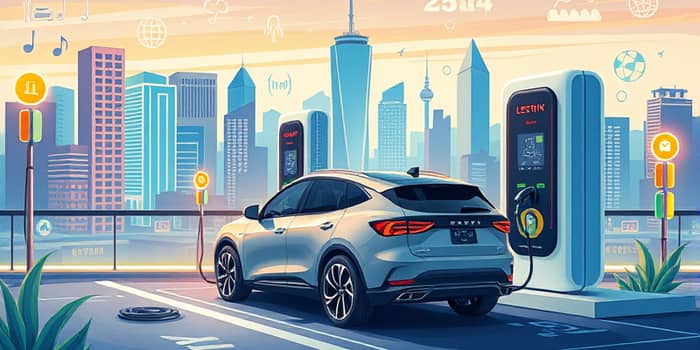
The global automotive industry is undergoing a profound transformation as manufacturers, governments, and consumers embrace electrified mobility. What began as a niche market segment has accelerated into unprecedented worldwide momentum, reshaping production lines, supply chains, and infrastructure networks.
This article examines the forces propelling the pivot to electric vehicles (EVs), the challenges ahead, and the lasting impact on society and the environment.
In recent years, EV sales have surged globally, reaching over 17 million units sold in 2024. This accounted for more than one-fifth of all new cars worldwide—a threefold increase from 2020. Analysts forecast that in 2025, EV sales will top 20 million, representing over 25% of global new-car deliveries.
Longer-term projections are even more ambitious. By 2030, the global EV fleet is expected to stand between 95 and 105 million vehicles. Looking further ahead, EVs could make up one-third to one-half of all light-duty vehicles by 2050, driven by rapid advancements in battery technology and cost reductions.
While the EV revolution is global, regional markets show unique trajectories:
Governments worldwide are using policy levers to accelerate EV adoption and meet decarbonization targets. Several regions plan to ban the sale of new ICE cars by 2030–2035, pushing automakers to retool their lineups.
Beyond financial incentives, rising consumer awareness of clean energy and the appeal of silent, smooth electric drivetrains have bolstered demand. Falling battery costs—down around 85% over the past decade—make EVs increasingly price-competitive.
The EV market has become a battleground between legacy automakers and agile startups. Established players like Ford, General Motors, Volkswagen, and Hyundai are racing to electrify their bestselling models, while newcomers—Tesla, Rivian, Lucid—focus solely on EVs and software-driven features.
In May 2025, the U.S. recorded 103,435 new EV sales, representing 6.9% of all car sales. Tesla maintained leadership, but manufacturers such as GM and Hyundai reported significant percentage gains, challenging the status quo.
Automakers are also investing heavily in next-generation battery chemistries, solid-state technology, and vehicle-to-grid integration, aiming to improve range, charging speed, and overall energy efficiency.
Scaling charging infrastructure remains one of the most critical hurdles. China hosts two-thirds of the world’s public chargers, while regions like California struggle with low charger-to-EV ratios despite high adoption rates.
On the supply side, potential disruptions—higher trade tariffs, slower economic growth, or falling oil prices—could temper EV uptake. Meanwhile, the aftermarket service industry is evolving, requiring technicians skilled in software, battery diagnostics, and electric powertrain maintenance rather than traditional engine repair.
Electrification of transport is central to global climate strategies. Widespread EV adoption could cut millions of tons of CO₂ emissions yearly, aligning with the Paris Agreement goals and net-zero pledges by 2050.
At the same time, the shift presents economic opportunities. Nations integrated into auto supply chains—for example, South Africa and Eastern Europe—stand to benefit from new EV component manufacturing and battery assembly facilities.
Emerging economies in Asia, Latin America, and Africa saw EV sales jump over 60% in 2024. Affordable used EVs—up 32.1% in U.S. secondary market sales in May 2025—offer a pathway for broader adoption among cost-conscious buyers.
This secondary market growth highlights EV longevity and underlines the importance of robust battery recycling and second-life applications, such as stationary energy storage.
As the automotive sector pivots decisively to electric vehicles, stakeholders across the value chain must collaborate to address infrastructure gaps, technology limitations, and workforce training. The result promises cleaner air, lower operating costs, and a more sustainable future for mobility worldwide.
References













